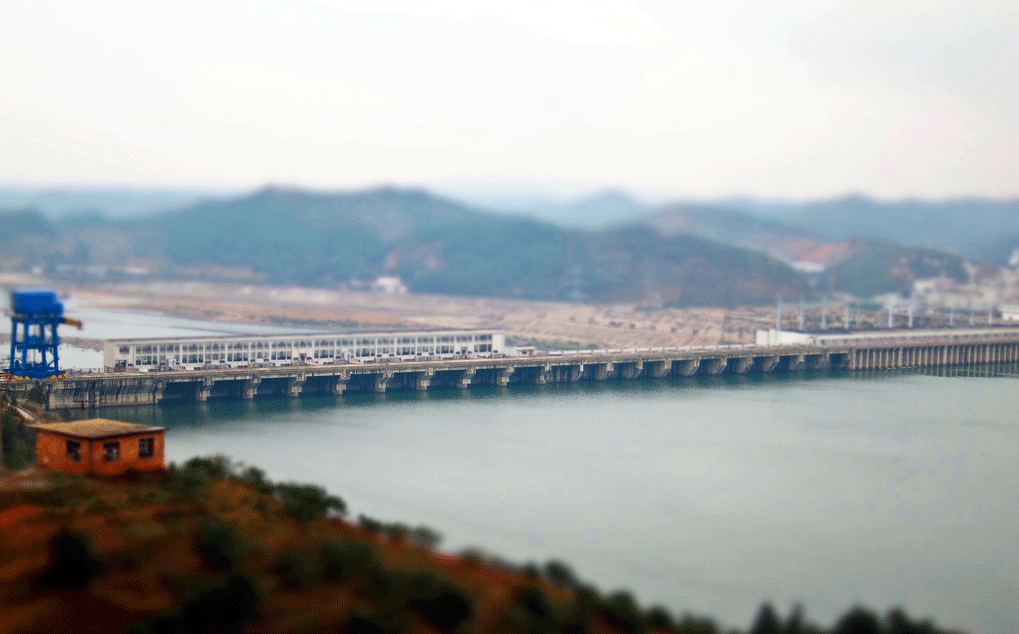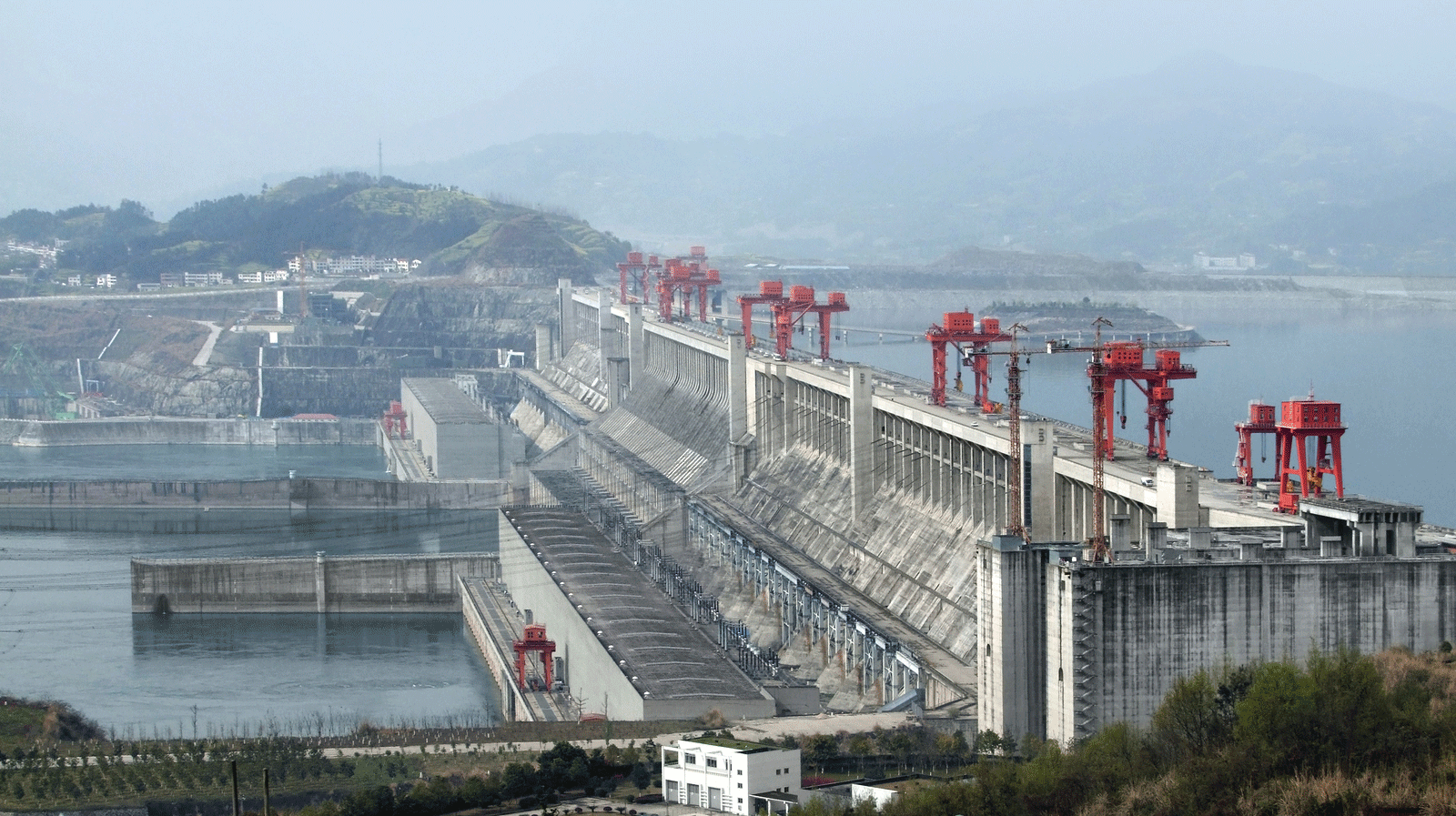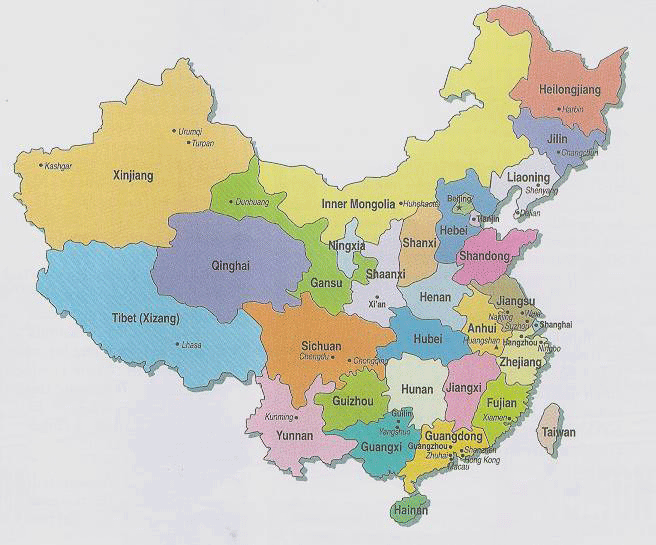Hydropower Overload In China
Air Date: Week of April 11, 2014

Wan’an Dam in Southwest China. (Chen Zhao)
For the past 65 years, China has built nearly two dams per day, and wants to expand its hydroelectric capacity. Jennifer Turner, director of the China Environment Forum at the Washington DC's Wilson Center, tells host Steve Curwood that China plans to ramp up dam installation in Yunnan Province, which raises the risks for this biodiversity hotspot in Southwest China.
Transcript
CURWOOD: China is a country of superlatives. It has the largest population in the world, and its rapid development also makes it the largest emitter of climate changing carbon dioxide. China also has the most hydroelectric dams in the world, about 80,000. Since 1948, it's built nearly two large dams every day. By 2020, China hopes to generate 430 gigawatts of hydropower, more than the European Union and the US combined. But all those dams require water and many are profoundly changing ecosystems, according to Jennifer Turner. She’s Director of the China Environment Forum at the Woodrow Wilson International Center for Scholars in Washington, DC.
TURNER: A couple of years ago, when they passed their most recent five-year plan, they really decided that they wanted to make a bigger cut into lowering their greenhouse gas emissions, and they really saw that increasing hydropower was a very important strategy as a kind of game-changer for coal.
CURWOOD: Look for a moment at the economics for me. If they’re been putting up all these dams, there’s a constituency of companies that like to put up dams. They’re looking for those contracts, I would imagine.
TURNER: Exactly. It’s a huge industry. It’s not just within China, it’s also overseas. You have this very unfortunate situation where builders are leading the planning and there’s not very good protection. A few years back, there was this massive fish sanctuary - it’s a nature reserve - and there was this - what was called an “ecological red line” that this area is going to remain protected in the upper reaches of the Yangtze. Well, lines have moved because a number of dams needed to go in. So you have this very unfortunate situation where builders are leading the planning, and there’s not good protection.

Three Gorges Dam on the Yangtze River is the world’s largest hydroelectric dam by installed capacity. (bigstockphoto.com)
CURWOOD: So, by 2020 we’re looking at more hydropower than what’s produced between the US and Europe combined. Where is all this electric juice going?
TURNER: Well, to expand their cities, China is in the process of urbanizing another 300 million people over the next 15 years. About 70 percent of their electricity goes to the industrial sector, making the steel and cement, but also making products for export. Something like 25 percent of their electricity is for export production, so we get some of it too.
CURWOOD: So when we buy an appliance made in China, we’re helping to make their air bad and ruin their biodiversity?
TURNER: In effect, we are connected. China is such an integral piece of the global supply chain, right? What powers that but electricity? And so we are indeed connected to the water problems that are happening in China around hydro.
CURWOOD: How much water is there to keep all these dams operational? What are the odds of running out?
TURNER: Well, China’s largest lake is Lake Poyang. It’s about twice as big as the city of London, or it should be. In January, it went completely dry. One of the reasons is that it’s no longer getting the periodic floods of the Yangtze River. And then layer on top of that, droughts. Many of the existing hydropower dams are reservoirs that are about half full, and they can’t provide enough electricity, so what they end up doing is building a coal-fired power plant next to them because every hydropower plant that goes in of any size is committed to send electricity to the east coast. So besides more hydropower going in, we’ve discovered in our own, on-the-ground research that there’s actually more coal-burning going on in southern China as well.

China has plans for between 50 and 80 new hydroelectric dams, most of them in Yunnan Province in Southwest China. (Wilson Center, China Environment Forum)
CURWOOD: Wait a second, I’m scratching my head here.
TURNER: [LAUGHS]
CURWOOD: Hydropower is supposed to reduce the need to use coal, but because there’s not enough water, they’re putting up coal plants anyway next to these hydropower things?
TURNER: That’s what we discovered in the time when there was particularly bad drought, but droughts are growing more common. Again, remember when I said that the builders are leading the planning so the rivers are not being evaluated carefully before these dam cascades go in.
CURWOOD: Jennifer, please tell me about the region of western China that’s experiencing this dam boom?
TURNER: The richest nature in some ways - it’s kind of retreated to this far southwestern part of China. So you have, in essence, giant Yellowstone Park type areas down there with many different types of ecosystems, from bamboo groves to savannas to meadow to freshwater, wetlands, to coniferous forests. You have everything. It’s beautifully diverse, particularly in terms of the plant life. Animal life, not as much. I mean, over the past decades as China’s developing has been pushing further west, you’ve seen some of the larger species, the elephants - they’re disappearing - tigers no longer really exist in the wild, but where there are the pandas and some of these larger species, it is in southwest China and their habitat is increasingly being eaten up by development, and hydropower is really at the frontlines of that development.

The iconic panda bear still makes its home in some remote patches of Yunnan Province.
CURWOOD: Now what about the biodiversity corridors that rivers generally provide? I mean, what are the impacts there from building these dams?
TURNER: We have more information about the fish species. I mean, not only are nature reserves being just ignored, the fact that the fish, they can no longer migrate the way they are supposed to. They’re have been attempts to do some kind of fish farming to try to reinvigorate the fish species, but then when the small fish, the little fry, go downstream they just get killed basically going through the turbines and the many dams. They really can’t survive the process as they move downstream.
CURWOOD: Well, building new coal-fired power plants is bad for air quality and the climate and hydrodams are bad for the animals, the ecosystem, biological diversity. What’s China supposed to do?

Yunnan Province is in the Southwest of China, bordering Vietnam, Laos, and Myanmar. (Wikipedia.com)
TURNER: Between a rock and a hard place. China is going to keep building hydropower, but dam siting could be done better in looking at the environmental impact. Current dams could be managed better. But it is really a race, because when we look at the growth in electricity use in China, it doubled between 2000 and 2007, it’s in the process of doubling again, and so it’s a rush to try to get enough electricity to keep the economy running, to continuing being the world’s factory. It’s tough, and I can’t say that I can give a complete answer on what they should do except perhaps to ramp up some of the less environmentally-damaging forms of power that they’re working on. Renewables like the wind, the solar, and particularly on energy efficiency. A lot more could be done on that account.
CURWOOD: Jennifer Turner is Director of the China Environment Forum at the Woodrow Wilson International Center for Scholars. Thanks so much for taking the time today.
TURNER: Thanks so much for talking to me.
Links
Living on Earth wants to hear from you!
Living on Earth
62 Calef Highway, Suite 212
Lee, NH 03861
Telephone: 617-287-4121
E-mail: comments@loe.org
Newsletter [Click here]
Donate to Living on Earth!
Living on Earth is an independent media program and relies entirely on contributions from listeners and institutions supporting public service. Please donate now to preserve an independent environmental voice.
NewsletterLiving on Earth offers a weekly delivery of the show's rundown to your mailbox. Sign up for our newsletter today!
 Sailors For The Sea: Be the change you want to sea.
Sailors For The Sea: Be the change you want to sea.
 The Grantham Foundation for the Protection of the Environment: Committed to protecting and improving the health of the global environment.
The Grantham Foundation for the Protection of the Environment: Committed to protecting and improving the health of the global environment.
 Contribute to Living on Earth and receive, as our gift to you, an archival print of one of Mark Seth Lender's extraordinary wildlife photographs. Follow the link to see Mark's current collection of photographs.
Contribute to Living on Earth and receive, as our gift to you, an archival print of one of Mark Seth Lender's extraordinary wildlife photographs. Follow the link to see Mark's current collection of photographs.
 Buy a signed copy of Mark Seth Lender's book Smeagull the Seagull & support Living on Earth
Buy a signed copy of Mark Seth Lender's book Smeagull the Seagull & support Living on Earth

